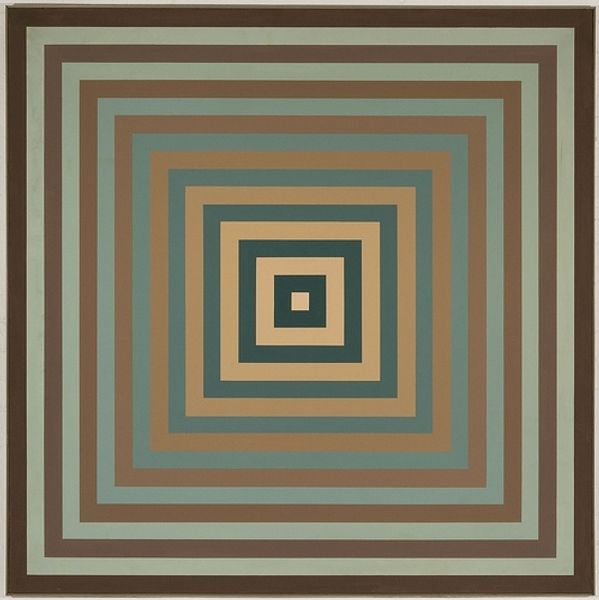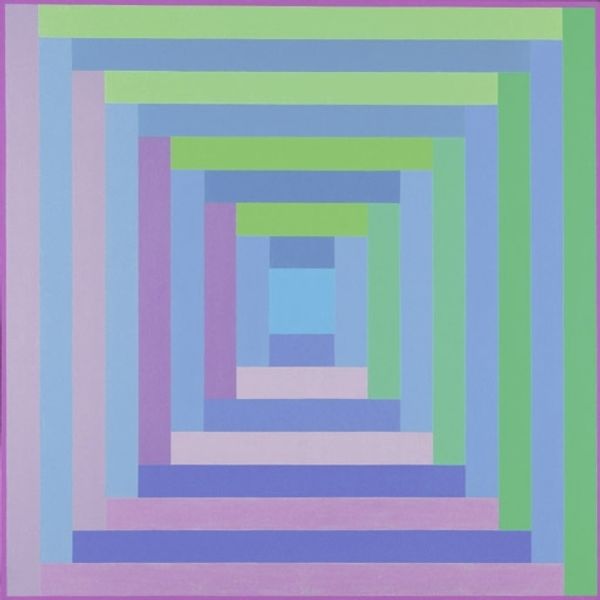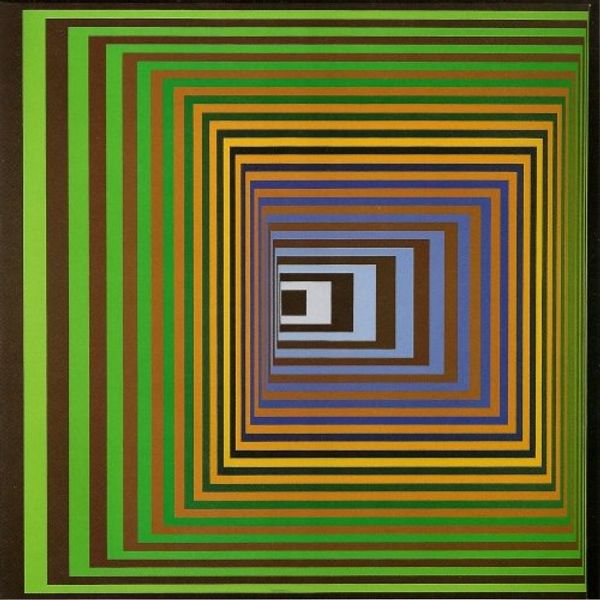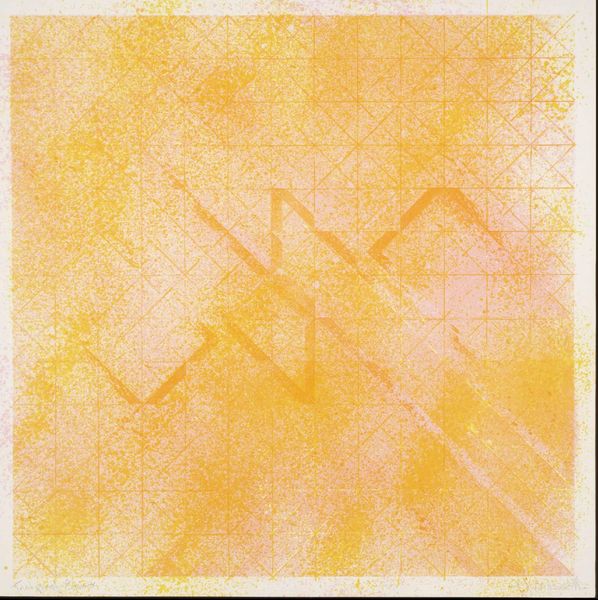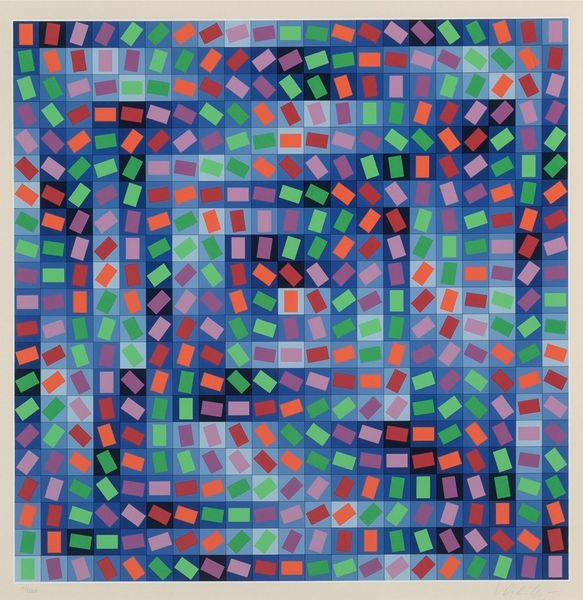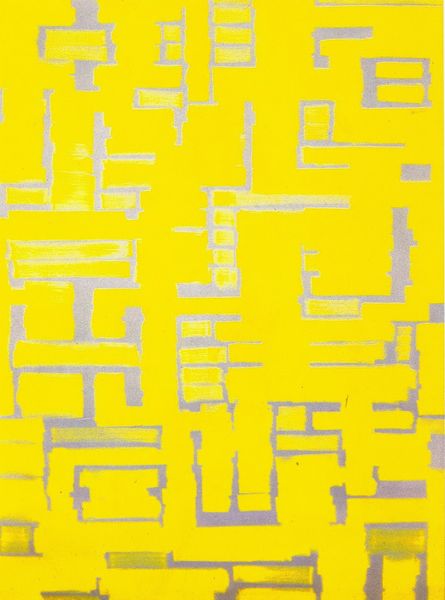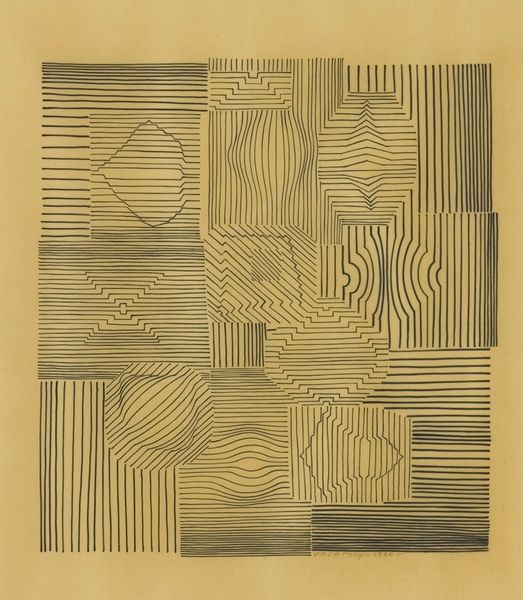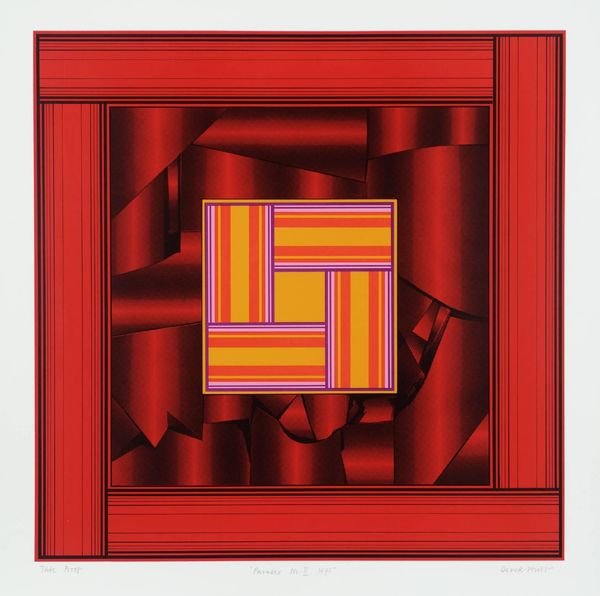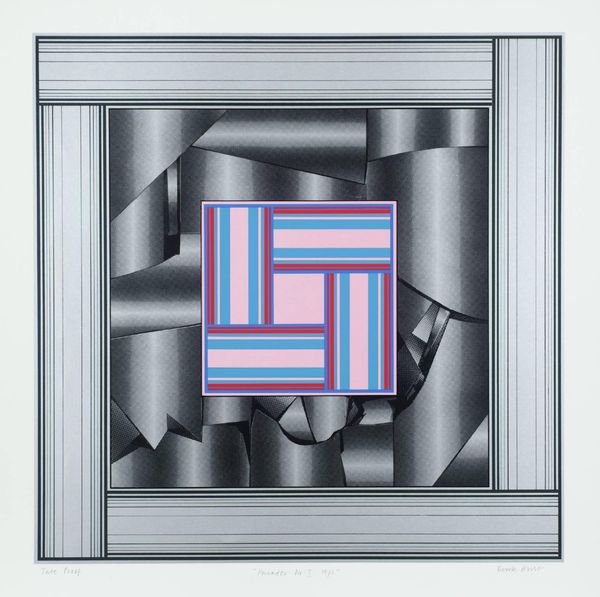
acrylic-paint
#
op-art
#
acrylic-paint
#
abstract
#
geometric pattern
#
abstract pattern
#
geometric
#
geometric-abstraction
#
abstraction
#
pop-art
Copyright: Modern Artists: Artvee
Editor: We're looking at Victor Vasarely's "Vonal or," made in 1968. It’s an acrylic on… something. The pattern creates this illusion, like you’re falling into a green and gold tunnel. What should we consider when approaching this? Curator: Let's look at it in terms of production. Consider the rise of plastics and industrial paints in the '60s. This isn’t oil on canvas imitating reality. It's acrylic – a material born from petrochemicals – creating a manufactured optical experience. What does that say about our relationship with the artificial? Editor: So, the medium itself is part of the message, it seems to echo the illusionistic nature of the art, manufactured…like an assembly line? Curator: Exactly. Think about the labour involved. Was this painstakingly hand-painted, or could a screen-printing technique achieve a similar result? The potential for mass production is crucial. Vasarely aimed for democratic art, reproducible and accessible. He questioned the traditional art world’s emphasis on the unique, handmade object. Editor: That’s interesting! The geometric abstraction feels very calculated. Was there a human element during production at all? Curator: Probably a large element. But think of it in this way: even the artist’s hand, in this context, can be seen as part of the larger, almost industrial process of image making and replication, not unlike Pop Art! Do you see how these repeating geometric shapes might be mass produced in factories? Editor: I get that now! The accessibility, the manufacturing…I never considered how the materials used impacted the artwork’s message, how art comments on mass consumption. Curator: Exactly. Reflect on what’s been said as you ponder its materiality!
Comments
No comments
Be the first to comment and join the conversation on the ultimate creative platform.
